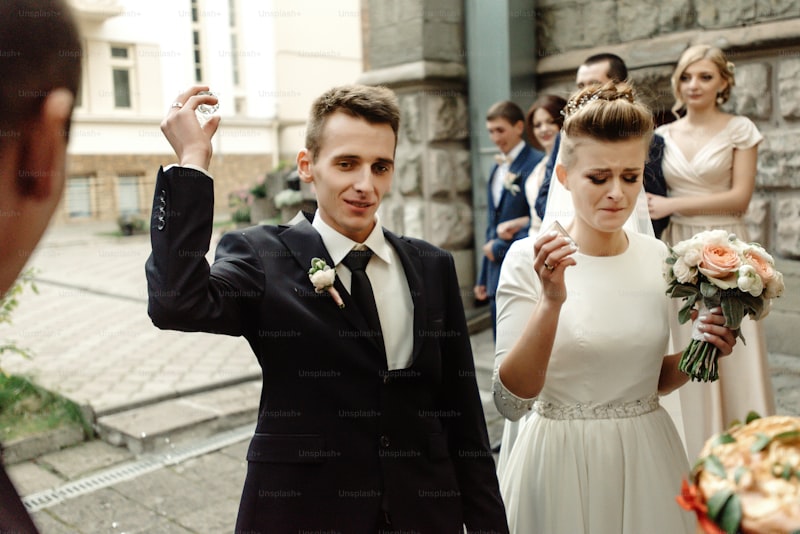Exploring International Wedding Styles: A Global Celebration of Love
Weddings are a momentous occasion, celebrating the union of two individuals in love. Around the world, different cultures and traditions bring unique elements to this beautiful event. In this article, we will delve into the diverse International Wedding Styles, exploring the varied customs, attire, foods, and rituals that define wedding celebrations across different countries. Whether you're planning a wedding or simply fascinated by cultural practices, this guide will enrich your understanding of how love is celebrated globally.
The Essence of International Wedding Styles
Each wedding style reflects a community's identity, beliefs, and values. They are shaped by historical influences, local customs, and, importantly, family traditions. To understand these styles better, we can categorize them into a few broad themes, highlighting key elements like rituals, clothing, and culinary customs.
| Wedding Style | Key Features |
| Western Weddings | Modern attire, ceremony in a church or outdoors, individualistic focus. |
| Indian Weddings | Colorful attire (sarees and lehengas), multiple-day celebrations, elaborate rituals. |
| Chinese Weddings | Red color symbolism, traditional tea ceremony, multiple banquet events. |
| Mexican Weddings | Vibrant cultural traditions, music, and dance, often with a religious component. |
| Middle Eastern Weddings | Grand celebrations, rich in traditions, often with multiple festivities. |
Western Weddings: Modern Traditions with a Personal Touch
In many Western countries like the United States and the United Kingdom, weddings are often a blend of tradition and individuality. Couples usually opt for formal attire; the bride may wear a white gown, symbolizing purity, while the groom typically dons a suit. Ceremonies are often held in churches or beautiful outdoor settings. Popular features include exchanging vows, toasting with champagne, and capturing moments in professional photography and videography.
In recent years, many couples have incorporated personalized elements into their ceremonies, such as tailored vows, unique venues, or even thematic decorations reflecting their interests or love story. The emphasis is on individualism, allowing couples to express their love in manners that resonate personally with them.
Indian Weddings: A Spectacle of Colors and Rituals
India is renowned for its lavish weddings filled with vibrant colors, rituals, and multi-day celebrations. Traditionally, Indian weddings can span several days and involve numerous ceremonies, including the Roka, Mehendi, Sangeet, and the main wedding day itself. The attire is often stunning, with brides wearing colorful sarees or lehengas adorned with intricate embroidery, while grooms typically wear a sherwani or kurta.
The rituals vary greatly between different regions and communities in India, but common elements include the exchange of garlands (Jaimala), the Saat Phere (seven circles around a sacred fire), and the Bidaai (the bride's farewell from her family). The food served at these weddings is also a significant highlight, with a rich array of dishes representing various Indian cuisines.
Chinese Weddings: A Union Steeped in Tradition
Chinese weddings are a harmonious fusion of ancient traditions and modern practices. A striking feature is the use of red, which symbolizes good luck and happiness. The bride typically wears a red qipao or cheongsam, adorned with intricate patterns, while the groom may don a matching outfit.
The traditional tea ceremony is a significant ritual where the couple serves tea to their parents and elders, signifying respect and the joining of two families. Banquets often follow the ceremony, featuring a lavish spread of dishes, ensuring that guests enjoy a memorable culinary experience. Popular dishes include fish (for prosperity) and sweet desserts signifying a sweet life.
Mexican Weddings: A Cultural Mosaic of Celebrations
Mexican weddings are lively events filled with joy, music, and traditional customs. Couples often incorporate elements like the lasso (a rope placed around the couple to symbolize unity), the arras (13 coins given by the groom to symbolize his commitment to share wealth), and a vibrant reception filled with mariachi music.
Attire can range from traditional white gowns to colorful dresses representing regional cultures. Food plays an essential role, with dishes like tamales, tacos, and traditional mole sauce, adding to the festive atmosphere. A cornerstone of the culture is the inclusion of family and community, making weddings a collective celebration.
Middle Eastern Weddings: Opulence and Tradition
Middle Eastern weddings vary widely by region but are generally characterized by grandiosity and a strong emphasis on family. Couples might exchange vows in elaborate ceremonies filled with rich adornments, traditional music, and generous feasts.
Brides often wear beautiful dresses enriched with intricate designs, and traditional Henna nights are common, where intricate designs are painted on the bride's hands and feet - symbolizing joy and beauty. Culinary traditions are essential, with dishes like kebabs, falafel, and baklava often served to guests, ensuring an extravagant feast to help celebrate the union.

Conclusion: Embracing the Diversity of Love
As we have explored various International Wedding Styles, it becomes evident that each culture brings its own unique touch to the celebration of love and unity. From the traditional aspects of Indian weddings to the personalized elements of Western ceremonies, weddings across the globe showcase the diversity of human connection.
When planning a wedding, or if you are simply interested in cultural practices, consider the deep meaning behind the rituals and customs. Celebrating love is universal, but the expressions of that love are beautifully varied. Embrace these differences and perhaps even incorporate elements from different cultures, allowing your celebration to reflect not only personal beliefs but also a global appreciation for love.
Remember, every couple is unique, and how you choose to celebrate your love story should feel authentic to you. May your journey lead to a wedding that embodies your story while embracing the world's rich tapestry of traditions.